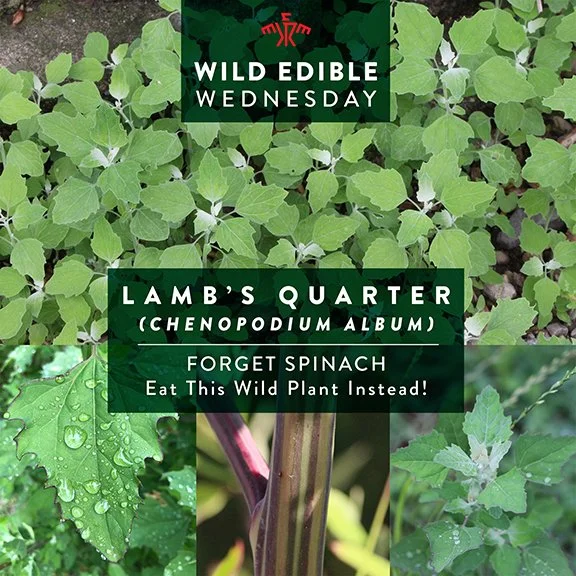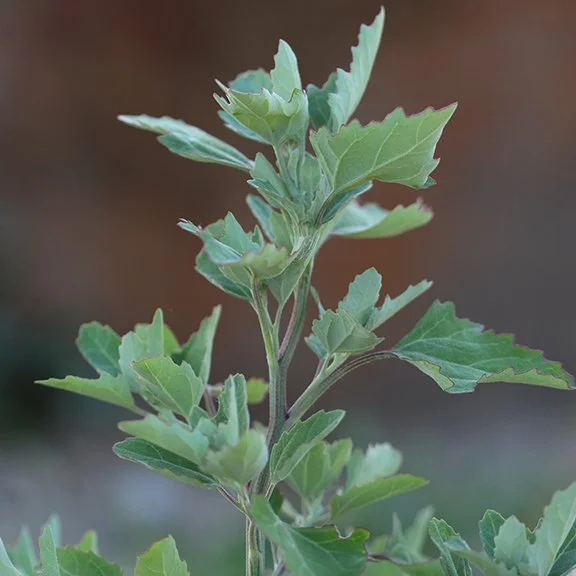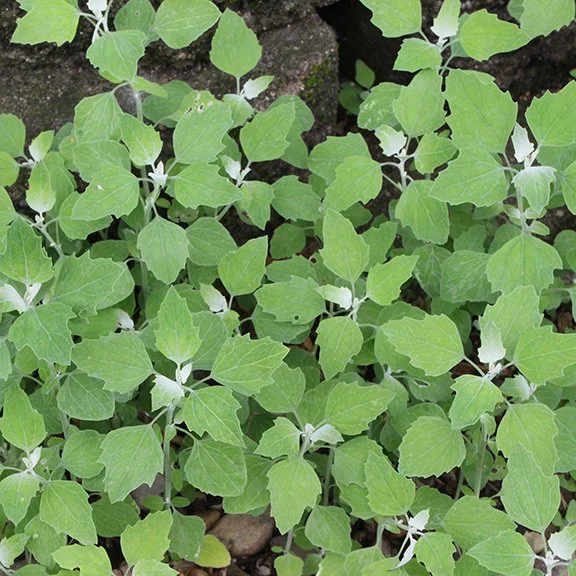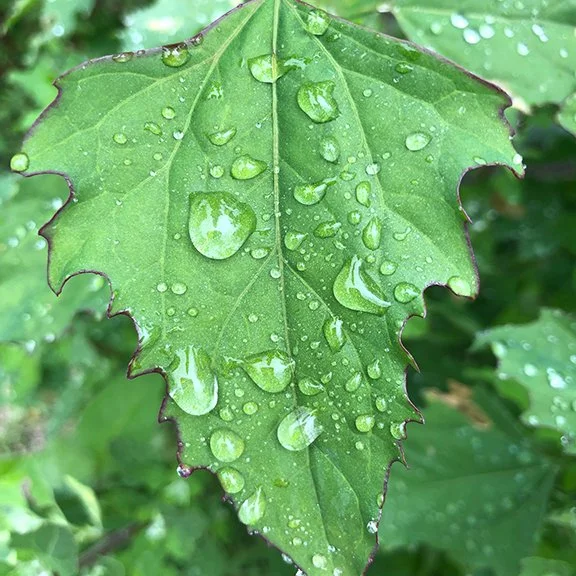How to Identify and Eat Lamb's Quarter (Chenopodium album)
Wild Edible Wednesday: FORGET SPINACH - Eat This Wild Plant Instead!
Have you ever come across a wild plant that closely resembles spinach and is not only delicious but also nutritious? Allow me to introduce you to Lamb's Quarter (Chenopodium album), a fantastic pesticide and herbicide-free alternative to store-bought spinach that you can easily forage for yourself. In this email, I'll provide you with a mini identification guide, a list of edible parts, and some tips for harvesting and enjoying this wild plant.
Mini Identification Guide for Lamb's Quarter:
Angular Vertically Grooved Stems: Lamb's Quarter stems vary in color from light green to purple.
Triangular to Diamond-Shaped Leaves: The leaves have irregularly toothed margins. Leaf teeth are typically large and mostly blunt.
Mealy White Coating: Check the undersides of leaves and stems of young plants for a mealy white coating that can be rubbed or scratched away. Young leaves at the terminal ends are also usually coated on both sides.
Long Petiole (Stem): The stem of Lamb's Quarter leaves is typically around half the length of the leaf itself.
Purple Markings: Leaves are often trimmed in purple, and this purple coloring can also be found in leaf axils and on the vertically ribbed stalk.
Tiny White-Green Flowers: Look for terminal flower spikes and those in leaf axils. They consist of numerous small white-green flowers resembling tiny pin cushions. In the fall, thousands of tiny black seeds follow.
Upper Leaves: Upper leaves are narrower and less toothed than lower leaves on mature plants.
Alternate Arrangement: Leaves and branches alternate along the stalk.
Best Edible Parts of Lamb's Quarter:
Young Leaves
Terminal Flower Spikes
Young Leafy Branch Tips
Dry Seeds (for garnish or grinding into flour)
How to Enjoy Lamb's Quarter
If you've cooked with spinach or used it in salads, you already know how to prepare Lamb's Quarter. The only difference is that your wild-harvested Lamb's Quarter is more nutritious and chemical-free. Enjoy the tender young parts, and you can consume the leaves from the moment they emerge until the first frost. Later in the season, you can harvest the seeds and incorporate them into various dishes like oatmeal, cookie batter, cereal, or as a sprinkle on other foods. Grinding them into flour is also an option for baking enthusiasts.
Warnings/Notes/Considerations
While Lamb's Quarter is generally safe for consumption, some people should exercise caution. Individuals with kidney stones, kidney problems, gout, or rheumatoid arthritis are advised to avoid plants high in Oxalic Acid. It's worth noting that many common grocery greens and vegetables, such as Spinach and Rhubarb, also contain Oxalic Acid.
Incorporate Lamb's Quarter into your culinary adventures and experience the flavors of this nutritious wild plant. If you have any questions or want to share your Lamb's Quarter creations, feel free to reach out. Happy foraging and cooking!
WATCH THE VIDEO
Below is a video where I harvest and eat Lamb's Quarter seeds in the winter! WARNING - it might make you want to go out into the woods!





